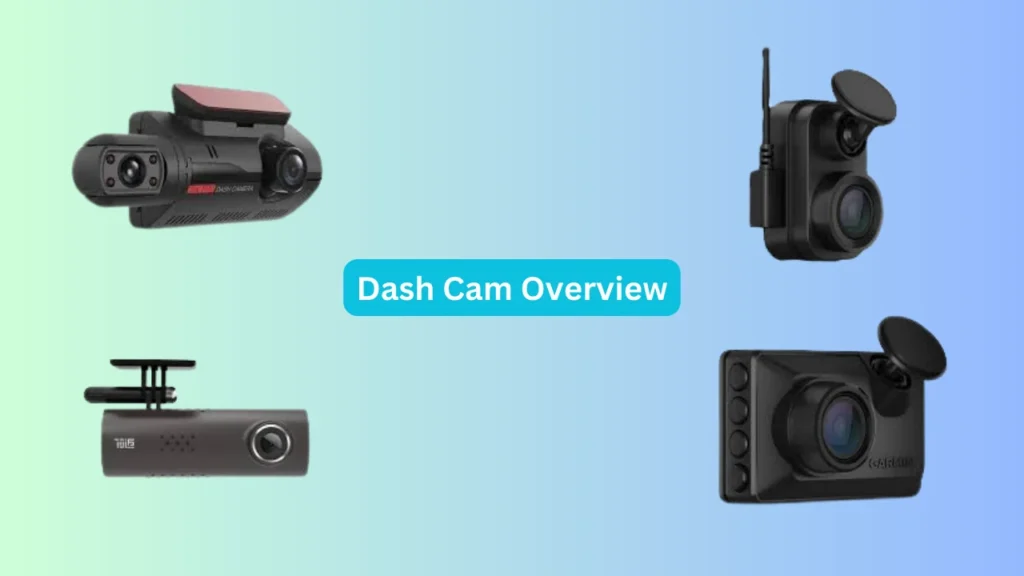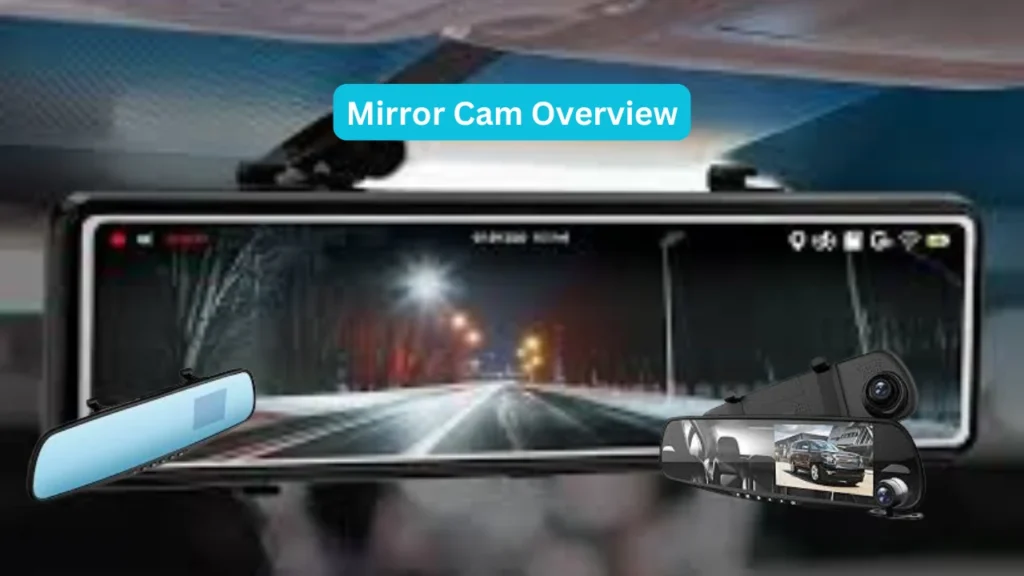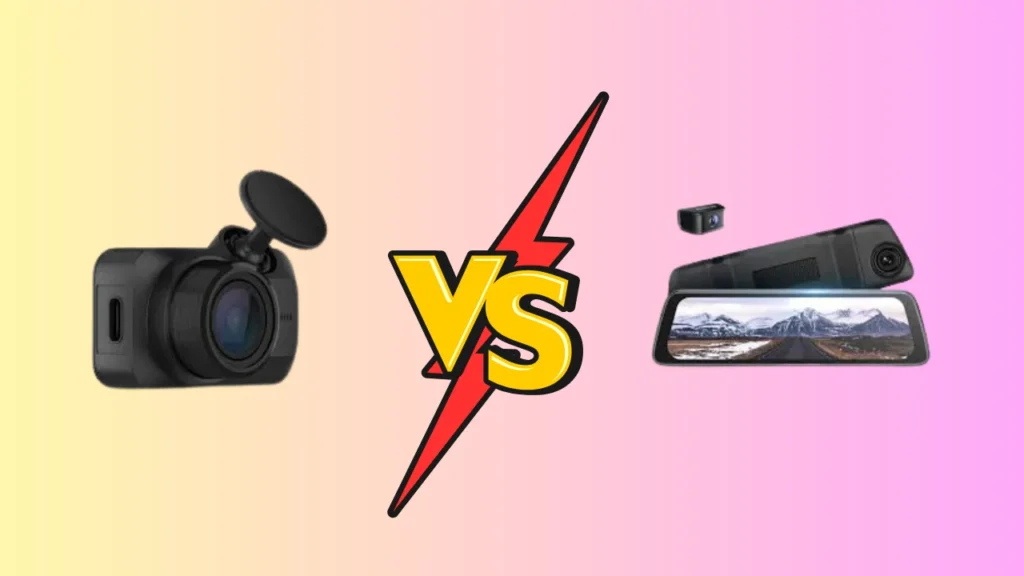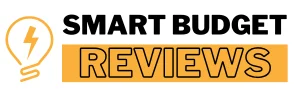When it comes to car safety, the debate around dash cam vs mirror cam is heating up. Did you know that over 70% of drivers prefer having a camera system for peace of mind? Both options have their perks, and picking the right one can save you from road troubles—or even hefty insurance claims. Decide between two top brands with BlackVue vs Garmin Dash Cam.
I’ve seen drivers save thousands by having the right setup. Dash cams are compact and record crystal-clear footage, while mirror cams double as rearview displays. With over 10 million units sold annually, it’s clear these cameras are more than just gadgets—they’re road essentials!
Which one offers better video quality—dash cam vs mirror cam?
When comparing video quality between a dash cam vs mirror cam, both can offer high-definition footage, but the quality largely depends on the model and price range. Premium dash cams often provide superior video quality, with features like 4K recording, wide dynamic range, and excellent night vision.
Mirror cams, while generally offering good video quality, may not always match the high-end dash cams in terms of clarity or frame rate. However, mirror cams usually come with larger screens, which can enhance the viewing experience. Overall, if video quality is a top priority, a dash cam may be the better choice. Learn the key differences between Capacitor Dash Cam vs Battery.
Comparison Table
Overview of Dash Cams

When it comes to in-car cameras, dash cams are a classic choice for many drivers. These standalone devices are simple yet effective for recording everything happening in front of your vehicle. Let’s explore why they’ve gained such popularity.
What Are Dash Cams?
Dash cams are compact cameras designed to sit discreetly on your car’s windshield or dashboard. Roughly 80% of dash cams on the market focus on front-facing recording. They’re built for one purpose: capturing road incidents and providing evidence when needed.
Key Features of Dash Cams
Most dash cams are loaded with practical features like loop recording and motion detection. For instance, around 70% of models include night vision, making them effective for low-light conditions. Premium options even offer 4K video quality for crystal-clear footage.
Why Choose a Dash Cam?
Dash cams are a straightforward and affordable solution for capturing road footage. You can find good-quality models for as low as $50, with high-end ones priced around $300. Their simple setup makes them a go-to choice for over 65% of first-time buyers. Discover which premium option is better in BlackVue Dash Cam vs Thinkware.
Overview of Mirror Cams

Mirror cams are a game-changer for anyone looking to upgrade their driving experience. They combine the traditional rearview mirror with modern camera technology, offering dual benefits in one sleek device. Let me break down what makes them so appealing.
What Are Mirror Cams?
Think of a mirror cam as your rearview mirror on steroids. These devices replace or clip onto your existing mirror, with integrated cameras that record the front and rear. About 70% of models on the market also come with parking assistance features, making them super versatile.
Key Features of Mirror Cams
One standout feature is the large touchscreen display, which can measure up to 10 inches diagonally. This not only shows the recorded footage but also enhances visibility while reversing. Plus, many models include night vision, allowing for clear footage even in low-light conditions—perfect for nighttime drivers like me!
Why Mirror Cams Are Gaining Popularity
In 2023 alone, over 40% of in-car camera buyers opted for mirror cams, according to market trends. Their seamless integration and ability to continuously display rear footage make them ideal for vehicles with obstructed views. For larger cars or SUVs, they’re almost a no-brainer.
Comparison of Dash Cams and Mirror Cams

In this section, we’re going to compare dash cams and mirror cams based on key factors like installation, design, functionality, and price. Let’s dive into these differences and see which one might be the best fit for you!
Installation and Placement
When it comes to installation, dash cams are usually the easier option. They are typically mounted on the windshield or dashboard with a simple adhesive or suction cup, which can take just a few minutes.
In contrast, mirror cams can require a bit more effort—they often attach directly to the existing rearview mirror or replace it entirely, which might involve wiring for reverse camera functionality. So, if you want a hassle-free setup, dash cams might be your best bet.
Design and Discreetness
Dash cams are known for their sleek and compact design. Their small size means they won’t obstruct your view while driving, which is especially important for safety. You can expect many models to be no bigger than a smartphone, and they’re discreet enough not to draw attention.
On the other hand, mirror cams come with a larger display, which might take up more space on your windshield. While this gives you more screen to view footage, it can also be a bit more noticeable and could block part of your vision, especially in smaller cars.
Functionality and Features
Dash cams are mainly built to record, but many higher-end models come with added features like GPS tracking, Wi-Fi connectivity, and even collision detection systems. These features help capture crucial evidence in the event of an accident. Mirror cams, however, offer more functionality in one device.
They not only record video, but they also double as a rearview mirror with a larger screen, offering a continuous view of the rear of your car. Mirror cams often integrate with reverse cameras, providing additional parking assistance, which makes them an attractive option for drivers who value convenience.
Video Quality
Both dash cams and mirror cams offer excellent video quality, but the differences in design can influence the viewing experience. Dash cams generally record in 1080p or 4K resolution, ensuring sharp footage for crucial moments.
Mirror cams, however, often feature larger screens that can showcase higher resolution footage more clearly, but they tend to be equipped with a wide-angle lens to provide better coverage. So, if you’re focused on capturing clear, detailed video, you’ll find both types offer quality, though mirror cams may give you a more visually immersive experience.
Price Range
Price can be a deciding factor, and here’s where you’ll see a noticeable difference. Dash cams come in a wide range of prices, with basic models starting as low as $50, and premium ones reaching up to $400 or more.
Mirror cams, due to their dual functionality and larger displays, tend to be more expensive. Prices for mirror cams can start at around $150 and go up to $500, depending on the features like rearview camera integration or advanced display options. So, if you’re on a budget, a dash cam may offer better value for your money. Explore a detailed comparison of Garmin vs Viofo Dash Cam to find the best choice.
Pros and Cons
In this section, I’ll weigh the benefits and drawbacks of dash cams and mirror cams to help you decide which one fits your needs best. Let’s break it down!
Dash Cams Pros
Dash cams are a favorite for many drivers, and it’s easy to see why. They’re compact, affordable, and typically cost between $50 and $300, depending on features like GPS or 4K recording. Plus, they offer excellent video quality, especially at night, with most models providing 1080p HD or even 4K resolution.
Dash Cams Cons
However, dash cams aren’t perfect. They tend to be more limited in their functionality, mostly focusing on recording what happens in front of you. If you want rear-view monitoring or parking assistance, you’ll likely need to invest in a second camera, adding to the overall cost and installation complexity.
Mirror Cams Pros
Mirror cams offer more versatility. They function as both a rearview mirror and a high-tech camera system, often providing both front and rear coverage. The larger display can show live footage and even assist with parking, making it a great choice for those who prioritize safety. Expect prices around $100 to $500, depending on features like touchscreens or reverse camera integration.
Mirror Cams Cons
On the flip side, mirror cams are bulkier and more expensive than dash cams. They can obstruct your view, especially if the camera’s screen is large, and the installation is trickier. For example, wiring for the rear camera or integrating with your vehicle’s system can take longer and may require professional help.
Considerations for Choosing Between Dash Cam and Mirror Cam
When deciding between a dash cam and a mirror cam, it’s essential to weigh the features and benefits that align best with your driving needs. Both have their unique advantages, so let’s break down some important factors to help you choose.
Vehicle Type
If your vehicle has limited rear visibility or you often drive in tight spaces, a mirror cam could be a game-changer. For example, mirror cams with integrated rear cameras provide continuous rearview footage, helping you navigate and park safely. This can be especially useful in larger vehicles like trucks, where rear visibility is a challenge.
Desired Features
If you’re looking for a camera that focuses purely on recording your driving experience, a dash cam might be the way to go. With features like GPS tracking and incident detection, dash cams can provide more comprehensive data. You can find models ranging from $50 to $400, depending on the features you want, including Wi-Fi connectivity and video resolution up to 4K.
Budget Considerations
On a budget? Dash cams are generally more affordable, with entry-level models starting as low as $40. If you’re willing to invest more, a high-end dash cam will offer better video quality, advanced driver-assistance systems, and extended warranties. Mirror cams, however, tend to be pricier, ranging from $100 to $600, due to their dual functionality as both a mirror and camera.
Installation
Installation can be a deciding factor for many. Dash cams are straightforward to set up, usually taking no more than 30 minutes. On the other hand, mirror cams might take longer, especially if they come with rearview camera integration that requires wiring. This might take an hour or more, depending on your car model and the complexity of the system.
Aesthetic Preferences
If you prefer a sleek, minimalist look, a dash cam is likely your best choice. They are compact and unobtrusive, easily blending into the interior of your car. Mirror cams, however, are bulkier due to their larger screens and camera systems, making them more noticeable. Some drivers may prefer the added functionality over aesthetics, but it’s something to consider. This article compares the features and performance of Garmin Dash Cam 47 vs 57.
Final Words
Choosing between a dash cam vs mirror cam depends on your priorities. Dash cams are typically more affordable, starting at around $50, and easy to install, while mirror cams, priced between $100 and $300, offer extra features like parking assistance and a larger display.
If rear visibility is a concern, a mirror cam might be your best bet. However, for simplicity and budget-conscious buyers, a dash cam remains a practical option. Consider your needs and vehicle setup before making a decision.




